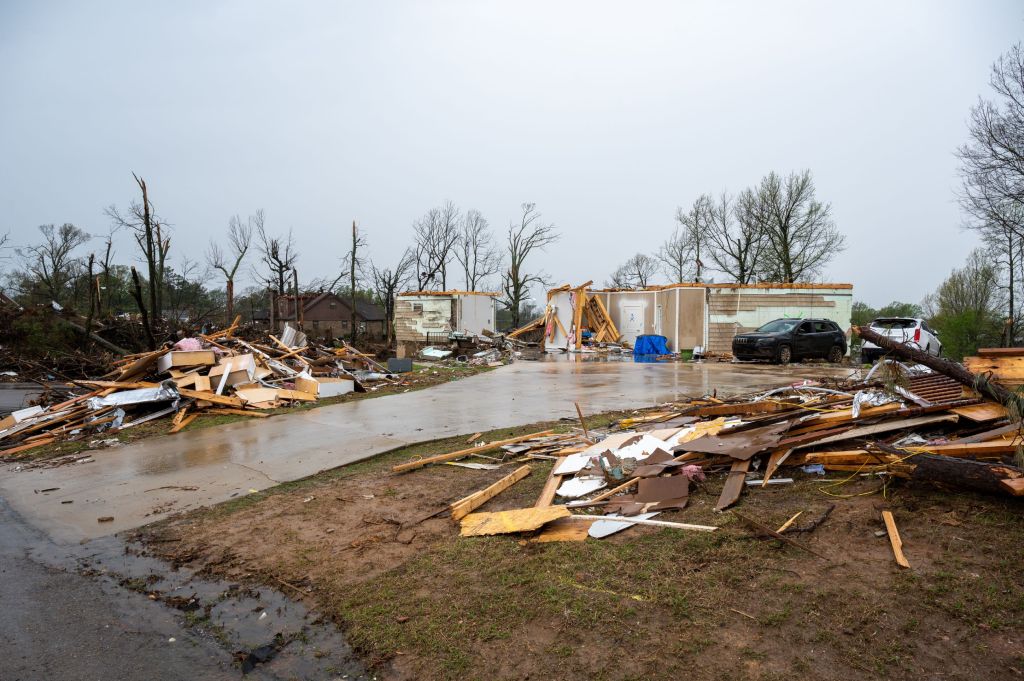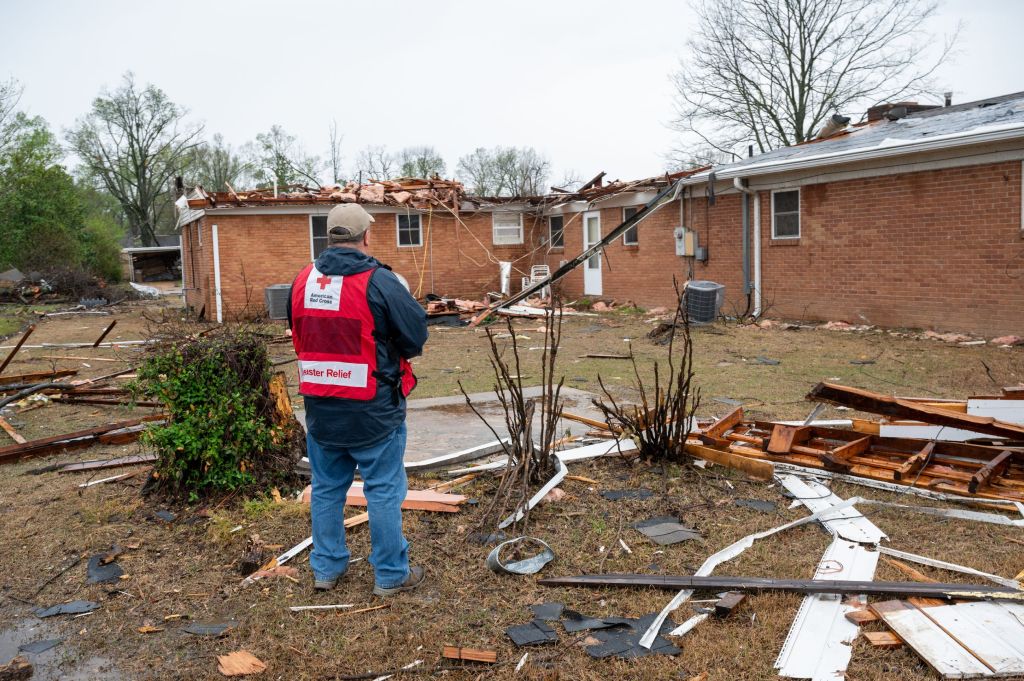By Samantha Pudelski, American Red Cross volunteer
Warmer weather will be arriving in Northern Ohio…eventually! We’ll be swapping snowstorms for thunderstorms and rain. While our region doesn’t experience hurricanes (this is the beginning of hurricane preparedness week), our area does experience severe storms that can bring tornadoes or flash flooding. Before severe weather strikes, refresh your severe safety knowledge with these tips from the American Red Cross.

Before Storms Strike:
- Identify a sturdy building that you can take shelter in. A sturdy building has walls and a foundation.
- Ideally, the building should have a basement, or a small, interior room without windows on the lowest level of the building.
- Mobile, manufactured, trailer homes and recreational vehicles (RVs) are not safe in high winds.
- If you reside in one of these structures, make sure to identify a building nearby that you can take shelter in quickly.
- Hold practice drills with everyone in your household to make sure everyone knows what to do and where to go before a storm hits.
- Sign up for free emergency weather alerts from your local government or weather service.
- In case there is a power outage, make sure to have a backup battery to charge your cell phone and a battery-powered radio.
- Know the different types of weather alerts:
– Severe thunderstorm watch: Means severe weather is possible in the area. Be prepared to act fast.
– Severe thunderstorm warning: Means a severe thunderstorm is in the area and to take action to get to safety.
– Tornado watch: Means tornadoes are possible in the area. Be prepared to act fast.
– Tornado warning: Means a tornado is near, and you must take immediate action to get to a safe location.
– Flood watch: Means that flooding is possible in the area.
– Flood warning: Means flooding is forthcoming or currently happening in the warning area.
– Flash floods warning: Means that a flash flood is imminent or currently happening. It is even possible that a flash flood can occur in an area not immediately receiving rain.
When Storms Are Predicted in Your Area or Currently Happening
- Look for storm signs such as darkening skies, lightning flashes and windy conditions. If you hear thunder, head indoors. Once you can hear thunder, the storm is close enough to be in danger of lightning strikes.
- If a severe thunderstorm warning is issued in the area, take shelter in a substantial building.
- Mobile homes can blow over in high winds.
- Keep away from windows.
- Don’t take a bath, shower or use plumbing.
- Avoid using electrical equipment and telephones.
- If you are driving, try to find a way to safely pull off the road and park. Stay in your vehicle until the heavy rain ends. Turn on your emergency flashers so other vehicles can see you.
- If you are outside and are not able to seek shelter in a building or car, avoid high ground, water, tall or isolated trees and metal objects. Sheds, picnic shelters, dugouts and metal objects, like bleachers, are not safe places to seek shelter.
- If someone is struck by lightning, call 911 immediately. If someone sustains a lightning strike they need professional medical care. Check the individual for burns and other injuries. If they stop breathing, begin CPR immediately. It’s safe to touch them, as individuals struck by lightning do not retain an electrical charge.

Tornado Safety
If a tornado warning is announced for the area you are in:
- Move to the lowest level of your home or a sturdy building, ideally a basement. If you aren’t able to move to a lower level, find a small interior room with no windows.
- Mobile, manufacturer, trailer homes and RVs are not safe in the event of a tornado or high winds.
- Monitor local weather and news on your phone or radio.
When Flooding is Predicted or Seen - Turn around, don’t drown! Stay off the roads and do not attempt to drive through a flooded portion of the road. Just six inches of fast-moving water can knock you over, and most vehicles can be swept away by less than two feet of water.
- If you are caught on a flooded road and the waters are rising around you, get out of the car quickly and move to higher ground.
- Tune in to your local radio or news for the latest weather updates.
- If your area is a risk flood area, prepare to evacuate quickly in the case it becomes necessary.
- Follow your local officials direction if you are asked to evacuate.
- Stay away from flooded areas, as they may contain snakes, insects and other animals. Keep children and pets away from these areas.
For more information on weather safety and about volunteer opportunities to help those affected by severe weather, visit https://www.redcross.org/local/ohio/northern-ohio.html.
Edited by Glenda Bogar, Red Cross volunteer
Posted by Ryan Lang, Red Cross board member and volunteer

